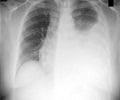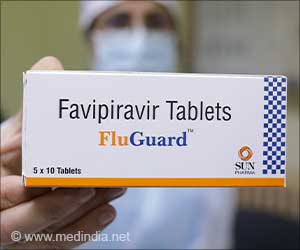World Tuberculosis Day which falls on March 24th, 2010, is tailored to increase public awareness about a disease which is still an epidemic in many regions of the world, annihilating the lives of many millions each year. March 24th is also a remembrance of the day in 1882 when Dr Robert Koch bowled the world over with his breakthrough discovery, the TB bacillus, and the cause of Tuberculosis. His discovery was really opportune as TB had begun to unleash a rein of death and destruction in Europe and America.
"On the Move against Tuberculosis, Innovate to Accelerate Action" – forms the theme of World Tuberculosis Day 2010. The themeunderlines the worldwide plan to Stop TB with better efforts and innovative ways in order to achieve the 2006-2015 targets. Though considerable achievements have been made, evidence shows that we need to speed up our efforts to achieve better results. The theme of Innovation calls for a different way of thinking, as well as to imbibe and inculcate the experiences of successful TB campaigns around the world.Objectives of World Tuberculosis Day 2010
The World Health Organization (WHO) Stop TB unit along with WHO regional and country offices has formulated standards, strategies and policies aimed at control of TB. The Stop TB Partnership is an organization with a well coordinated network of more than 1000 stakeholders. The stop TB partnership believes that ‘Intensified case-finding, Isoniazid prevention therapy, and Infection control need to be implemented critically to save lives, especially to cut the burden of TB in victims of HIV.
In a nutshell, the unit makes an evaluation of the progress made towards TB control, develops policies, gauges the performance of national programs, promotes research, looks into the financial requirements of the projects and helps in building partnerships worldwide with a motive to reduce the incidence of tuberculosis worldwide.
TB Facts
• Close to 2 billion people are infected with TB bacilli and one out of 10 who carry the TB bacilli will go on to suffer Active TB during their lifetime.
• TB is a leading killer of people with HIV.
• The developing world bears the brunt of most of the TB cases.
• 50% of all TB related deaths happen in Asia.
• Treatment for victims of Active TB is crucial as a single victim can infect 10-15 people each year, in the absence of treatment.
Tuberculosis
Tuberculosis, or TB, is a contagious bacterial infection caused by Mycobacterium Tuberculosis, which most often affects the lungs. This is called Pulmonary Tuberculosis. The disease can also affect the other parts of the body for instance - central nervous system, genitourinary system, circulatory system, lymphatic system, gastrointestinal system, joints, bones and even the skin. This is called Extrapulmonary Tuberculosis.
Tuberculosis can be Active or Latent.
Active TB indicates that the bacteria are multiplying in the body and symptoms will soon show up. If the TB is located in the lungs also called Pulmonary TB, it can spread easily to others. Symptoms of Active TB include persistent and prolonged coughing which could be accompanied by sputum or blood. Weight loss, fatigue, fever, chest pains and night sweats are some of the symptoms associated with TB.
Latent TB indicates that the TB bacteria are dormant in the body. Since the immune system is healthy it is able to restrain the bacteria from turning into an active one. There are no symptoms of TB at this stage and therefore the disease cannot spread to others. Yet, if TB is latent, it can turn into active at any time especially when the immunity drops.
Tuberculosis Transmission
Pulmonary TB (in the lungs) is highly infectious and spreads via droplets from the throat and lungs of those already infected with the disease. Transmission of the disease happens when an infected person coughs or breathes out air containing the TB bacteria.
Extrapulmonary TB cannot spread so easily.
Diagnosis
Latent TB is usually diagnosed with the help of a Tuberculin skin test where TB antigens are injected under the skin. The presence of the TB bacteria in the body will cause a red bump to appear on the skin exactly where the needle pierced the skin. The test can also report the onset of infection as well as its potency, indicating if it can be transmitted to others.
To diagnose Pulmonary TB, doctors check for the presence of TB bacteria from the sputum (mucus from the lungs). A chest X-ray is also taken to detect pulmonary TB.
To detect Extrapulmonary TB, doctors examine a sample of tissue (biopsy). Doctors may also ask for a CT scan report or an MRI which will enable pictures of the body to help them in the diagnosis.
Treatment
Active TB is treated with a combination of four antibiotics to be taken at the same time, called as Multiple-drug Therapy for a period of 6 months at least. The four antibiotics are Isoniazid (IHN, Nydrazid, Rifampin (Rifadin, Rimactane), Pyrazinamide and Ethambutol (Myambutol).
Victims of latent TB, need to take just one antibiotic for a period of nine months, which cuts the risk of latent TB turning active.
Antibiotics such as Rifapentine (Priftin), Streptomycin (STM) Ethionamide (Trecator-SC), Cycloserine Seromycin), Capreomycin (Capastat Sulfate), Levofloxacin (Levaquin, Quixin), Moxifloxacin (Avelox, Vigamox), are also used incase the patient does not respond to treatment or is infected with drug-resistant TB bacteria.
It is imperative that the prescribed medicines be taken strictly for the stipulated period for a successful treatment. If patients stop taking the medication prematurely, the condition may worsen and lead to a more virulent form - drug resistant TB which poses a big challenge for treatment.
Multidrug-resistant TB (MDR-TB) -Key Challenge to Tuberculosis Control
Discontinuation of tuberculosis medication abruptly, a trend witnessed in developing countries, poses one of the greatest hurdles in the campaign against Tuberculosis. Multidrug-resistant TB (MDR-TB) is a type of TB that is complex and costly to treat due to its lack of response to standard first-line drugs. It is usually triggered when the patient discontinues treatment prematurely or by the natural mutation of bacteria.
XDR-TB or extensively drug resistant TB is far more grave than MDR-TB, and poses one of the greatest hurdles to people suffering HIV/AIDS.
The success of the Global Plan to Stop TB 2006-2015 hinges on the cooperation of family members of victims, healthcare providers, and patients themselves to ensure that treatment is continued diligently for the stipulated period. If the objectives of the Stop TB 2006-2015 are met, it can save the lives of 14 million people and enable treatment to 50 million people. We need to support the efforts of this worldwide network by putting our hands together to obliterate the scourge that still exists like a ticking time bomb amongst us.
Source-Medindia
Savitha/L













